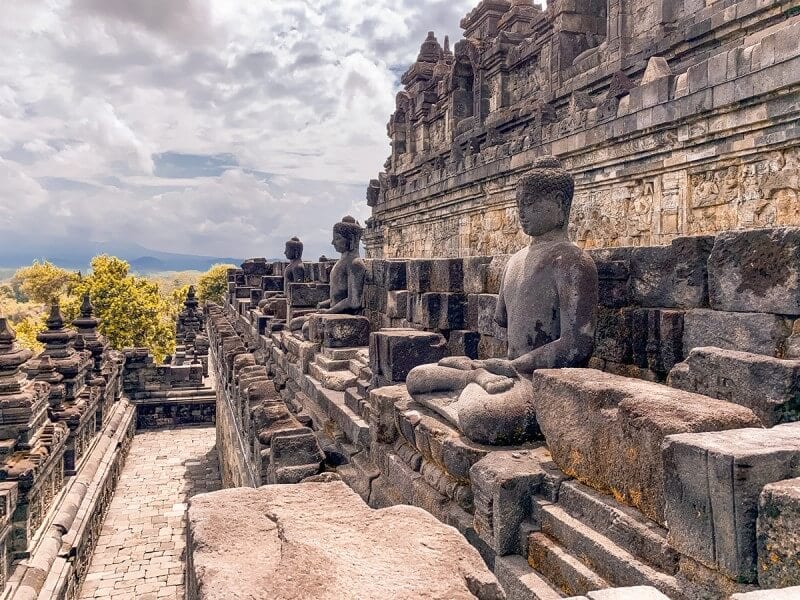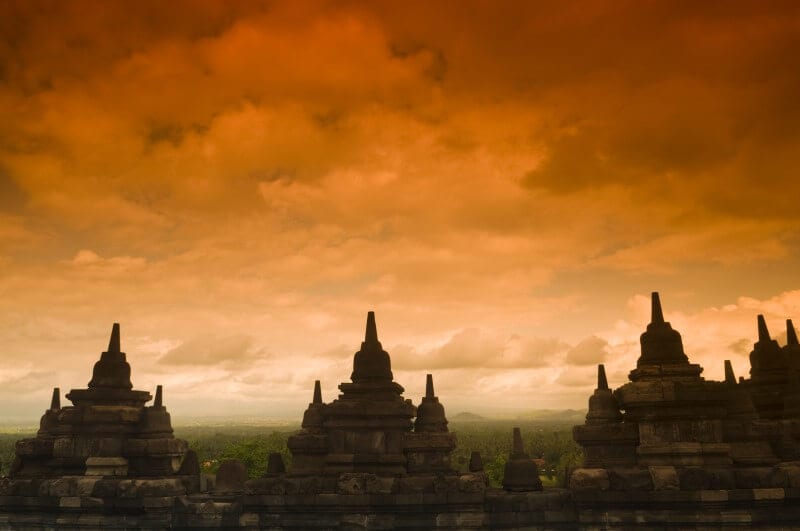This post may contain affiliate links. We may receive a small commission, at no cost to you, if you make a purchase. Read Disclosure.
When I arrived at the Borobudur Temple in Java, I distinctly remember being amazed by its grandeur and the spiritual aura you feel when you stand atop of the hilltop, looking out over stupas and Buddha statues.
Borobudur is the largest buddhist temple in the world, and is famous for its decorative relief sculptures, and long-standing history as a a training center for those looking to reach spiritual enlightenment.
In Indonesia, they regard it as one of the seven wonders of the world, but this hasn’t extended to the rest of the world. It’s still a UNESCO World Heritage Site and one of the most important Buddhist pilgrimage sites in Southeast Asia, if not the world.
Visiting the Borobudur Temple helped ignite what has turned into a lifelong passion for discovering different beliefs and viewpoints.
I knew little about Buddhism at the time, but I was determined to learn and find out. What better place to do that than from within the stone circular walls of a magnificent temple – the ancient Borobudur Temple in Indonesia?
In this guide, I share everything you need to know about visiting the Borobudur Temple, including its history, how to get there, and what special features to look out for.
The History of Borobudur Temple

Borobudur sits in an area between two twin volcanoes, Sundoro-Sumbing and Merbabu-Merapi, and two rivers, the Progo and the Elo, on the island of Java.
This area has been dubbed the “Garden of Java” and is known as a sacred place.
If you enjoy contemplating the mysteries of ancient structures, it was found that the three Buddhist temples in the region. Borobudur sits in the middle of the three temples, the others, Mendut Temple (3 km away) and Pawon Temple (2 km away), are built in a perfect straight line, and together they represent the phases you would take on a spiritual journey to reach Nirvana.
The Borobudur Temple is in the Kedu Valley, in the southern part of Central Java, Indonesia.
It was once the center of Buddhist life in Indonesia until sometime around the 15th centuries when it was mysteriously abandoned and remained undiscovered until the early 20th century (around 1814), when it was found buried under a pile of volcanic ash.
Somehow this massive temple was swallowed up by the trees and vines of the jungle and hidden from the eyes of humanity.
It as the first time I asked the…
Click Here to Read the Full Original Article at y Travel Blog…
